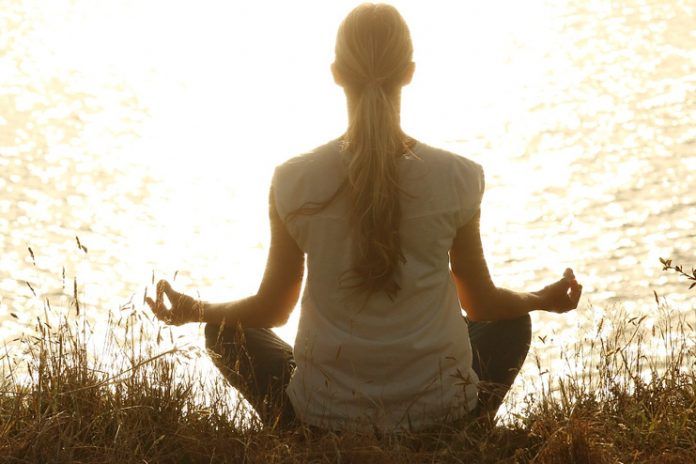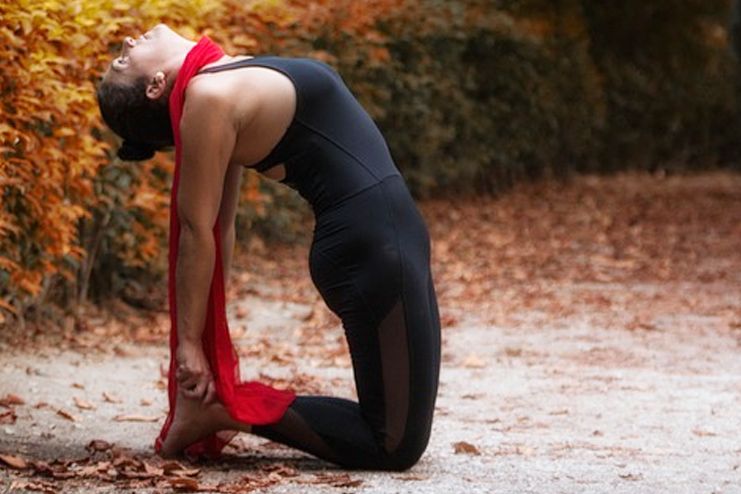Affiliate Disclaimer
Some links in this article are affiliate links. We may earn a small commission if you make a purchase through these links, at no extra cost to you. We only recommend products we find useful to our readersYoga and meditation are the two art forms that have effectively wormed their way in the life of several people dealing with heightened stress and anxiety. It has been existing since historic days and have proven benefits of providing one’s self with calmness and tranquility. If you are struggling daily with the added stress from work, love life or just anywhere in general, it is time to take a step back and evaluate your day’s activity and make a little place for yoga and meditation in without any fail. Yoga for anxiety is one of the most popular tried and tested methods that doesn’t just provide with instantaneous results but long lasting ones as well.
What is Anxiety and It’s Causes?
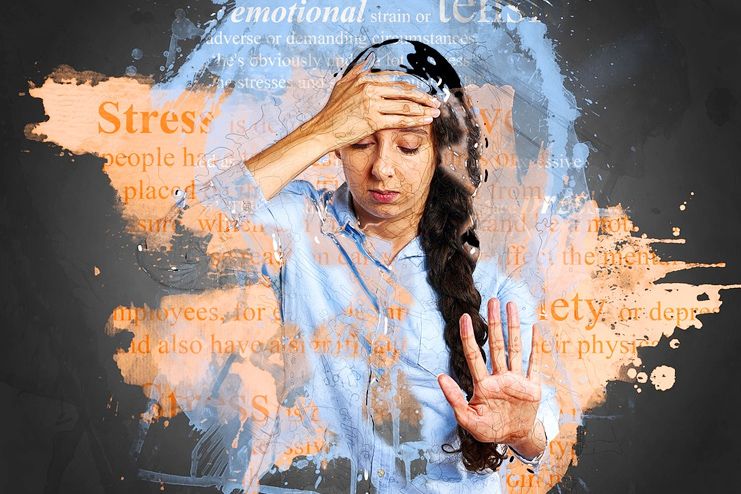 Stress has become a part and parcel of our daily life. With the impending competition, continuous work pressure and even issues with one’s personal life, it can often times become a lot overwhelming which is shown in the form of anxiety. Anxiety, in simple terms, is the body’s way of showing the level of stress its dealing with. Comprehensively, it is the lingering feeling of fear and the constant nagging apprehension about the future happenings.
Stress has become a part and parcel of our daily life. With the impending competition, continuous work pressure and even issues with one’s personal life, it can often times become a lot overwhelming which is shown in the form of anxiety. Anxiety, in simple terms, is the body’s way of showing the level of stress its dealing with. Comprehensively, it is the lingering feeling of fear and the constant nagging apprehension about the future happenings.
Have you ever found yourself suddenly getting tensed because of the results of your exam or the first day of your college or even just the thought of moving to a new city? All of us have been in a position like the above mentioned and these fleeting notions of fear can often result in dragging our confidence down and make us rethink our capabilities. Anxiety rises from a stressed situation but if you are finding yourself spike with anxiety in every speck of life, it is a signal that you are suffering from anxiety disorder.
The causes of anxiety doesn’t have a single root and may disintegrate and arise from a number of issues and reasons. While the psycho-chemistry varies from person to person, there are some common instances and causes for generalised anxiety disorder (GOD).
- Environmental factors much like what you experience in your personal life or even the kind of stress from your school or work life, any kind of prior traumatic happening that triggers your anxiety or even with the abundance or for the most times, lack of finances.
- Sometimes, on rare occasions, the issues regarding anxiety are handed by via the genetics. But, such cases are very rare and the primary reason and cause lies within the situation issues and sometimes with the lingering fear that most people face due to instances or happenings around them.
- Several medical factors too can hamper the stability of mind too, making people fidgety and tensed which are the primary signs and symptoms of anxiety. Consumption of heavy dosage of medicines or suffering from any kind of underlying medical condition are some of the issues that many people are faced with on a daily basis.
- Signs of withdrawal often times lead to the inception of anxiety. Alcohol or drug abuse leave behind signs and symptoms which can affect one’s health adversely, thereby, making them dependant on these illicit means. Withdrawal from these often leads to the spike in the rate of anxiety in a person.
How Does Yoga Help With Anxiety?
 Panic and anxiety disorders have the capability of affecting the life adversely, that too in multiple ways too. It often affects the entire mind, body, and soul of one’s being which is more than enough to rethink your stance and opt for a remedy that heals the issues related to anxiety and the issues it brings alongside it. With the kind of benefits that it imposes, yoga for anxiety is one of the most sought after and effective ways of cure. The correct execution of Yoga is believed to conjoin the three elements one’s existence – body, mind and spirit.
Panic and anxiety disorders have the capability of affecting the life adversely, that too in multiple ways too. It often affects the entire mind, body, and soul of one’s being which is more than enough to rethink your stance and opt for a remedy that heals the issues related to anxiety and the issues it brings alongside it. With the kind of benefits that it imposes, yoga for anxiety is one of the most sought after and effective ways of cure. The correct execution of Yoga is believed to conjoin the three elements one’s existence – body, mind and spirit.
But the question that has been lingering since the beginning of the article. How does yoga help relieve someone suffering from anxiety and depression? Yoga is the answer to a majority of the issues aligned with anxiety and it provides an anxious person with a healthy outlet for relaxation of mind and soul. It not just helps in shaping the body and keeping one’s self physically healthy, it contributes to mental health too.
Top Yoga Poses to reduce anxiety and provide stress relief
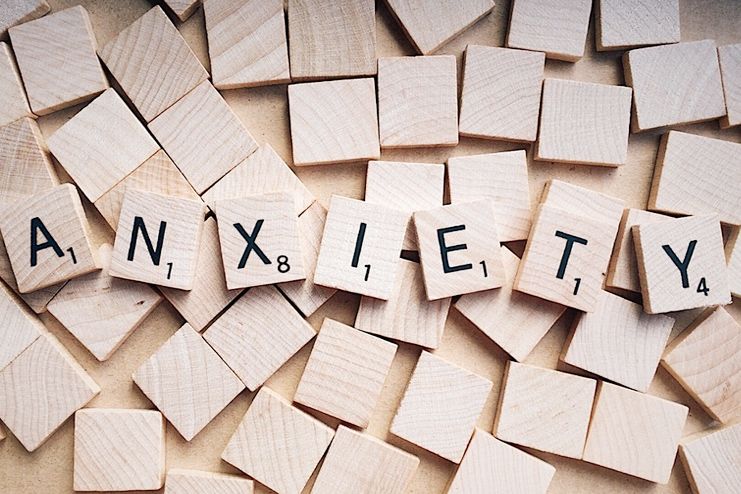 The benefits of yoga for anxiety is a long list of pros and more pros. There are a number of effective ways that yoga helps in curing anxiety and the several signs and symptoms of depression. With yoga, there are no possible side effects or negative impacts, rather a healthy way of living which helps improve a person’s both physical and mental health.
The benefits of yoga for anxiety is a long list of pros and more pros. There are a number of effective ways that yoga helps in curing anxiety and the several signs and symptoms of depression. With yoga, there are no possible side effects or negative impacts, rather a healthy way of living which helps improve a person’s both physical and mental health.
1. Balasana
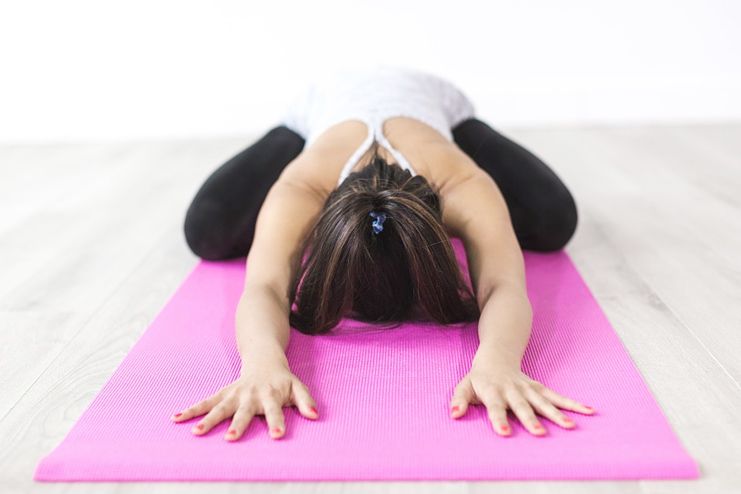 Much like what the name suggest, Balasana, or “Child’s Pose” is one of the primary yoga for anxiety. It is an asana that depicts the foetal position in a way which is where it gets its origin and name. This effectively has positive impacts and benefits on the thighs and even the back. It is being said that, if the asana is performed under the influence of the optimum gravitational pull, it has the capability of providing one’s self with peace, comfort and solace.
Much like what the name suggest, Balasana, or “Child’s Pose” is one of the primary yoga for anxiety. It is an asana that depicts the foetal position in a way which is where it gets its origin and name. This effectively has positive impacts and benefits on the thighs and even the back. It is being said that, if the asana is performed under the influence of the optimum gravitational pull, it has the capability of providing one’s self with peace, comfort and solace.
How To Do?
- Start with kneeling down on the ground with the big toes in contact with each other, much like how one would sit normally on their heels. Following that, spread your knees hips-width and inhale during the process.
- Bend forward and rest your trunk between your thighs and exhale in the process
- Stretch your arms and place them in the front aligned to your knees and release the frontier of your shoulder to the ground. Side note, you might also feel the front shoulder and the weight on it slightly pulling on the shoulder blades.
- Stay arrested in that position for 30 seconds. Lessen it if your back starts paining because exaggeration is never good.
- For the completion and release, stretch and retract the trunk of your body first and then inhale and lift the tailbone and rest it down on the pelvis.
Other Benefits
- Relieves back pain
- Keeps the internal organs active
- Promotes blood circulation in the body
- Stretches the muscles, tendons, and ligaments
- Helps relieve fatigue or dizziness
2. Vrikasana
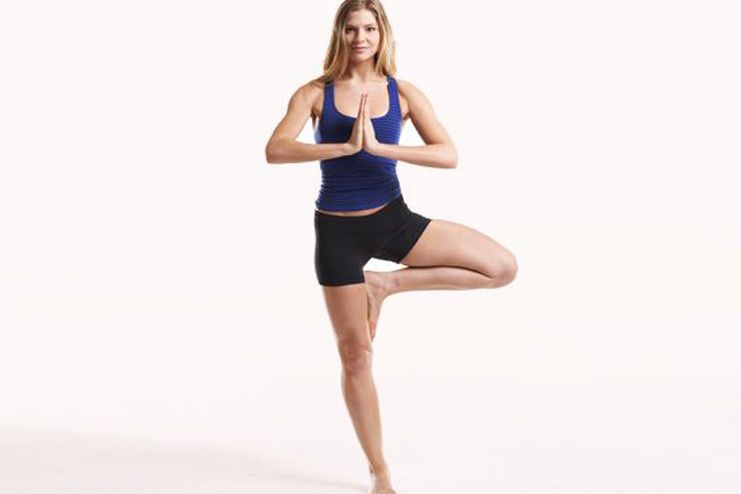 Vrikasana too gets its name with literal meaning behind it, where “vrik” means tree and “asana” denotes pose. This is why it is often referred to as tree pose as well. Unlike majority of the yoga for stress and anxiety relief, this particular one needs the doer to keep their eyes open. Why you ask? Because, closing the eyes would disturb the balance which is of primal importance in this asana.
Vrikasana too gets its name with literal meaning behind it, where “vrik” means tree and “asana” denotes pose. This is why it is often referred to as tree pose as well. Unlike majority of the yoga for stress and anxiety relief, this particular one needs the doer to keep their eyes open. Why you ask? Because, closing the eyes would disturb the balance which is of primal importance in this asana.
How to do?
- Stand straight and stout making sure to keep your arms by your side
- Start with bending your right knee carefully drawing it up and placing the heel on the inner part of the left thigh. Place the foot firmly on the root of the thigh and stand for a few seconds to get the balanced aligned.
- Once you are well balanced in the posture, inhale and raise your arms from the side and bring it above your head carefully and form a “Namaste” posture with your palms.
- Following mastering balance and posture, look straight ahead of you into a distant object and keep the vision steady.
- Keep your body completely straight and keep inspiring and expiring air gradually and gently.
- For completion, exhale slowly and bring your arms down from above your head and place them on the side of your body.
- Gradually remove your right heel from the inner part of the left thigh and bring it down on the ground.
- Once that’s done, repeat the same process with the alternate leg.
Other benefits
- Stretches the legs and back muscles
- Restores body balance
- Improves concentration
- Helps cure sciatica
3. Ustrasana
Ustrasana, also known as the camel pose, is a back bending asana which has effective remedial benefits in helping open the heart chakra cycle which is why it is considered one of the best yoga poses for anxiety. Not just that, it even aids in augmenting the strength and flexibility of the muscles.
How To Do?
- Start with kneeling on the yoga mat with your hands tautly resting on your hips
- Ensure that your knees and shoulders are aligned with each other and the heel of your feet are facing the ceiling
- Next, take a deep breath in and bring your tailbone close to your pubis all the while feeling the pull in the process
- Following that, arch your back and guide your palms onto your feet and straighten your arms in the process.
- Stay arrested in that possible for around 30 seconds, ensuring that the neck is not strained and is in a neutral state.
Benefits
- Improves digestion
- Unclogs and opens the chest and torso
- Strengthens the muscle of the back and shoulders
- Relieves lower back pain
- Alleviate menstrual problems
4. Dandasana
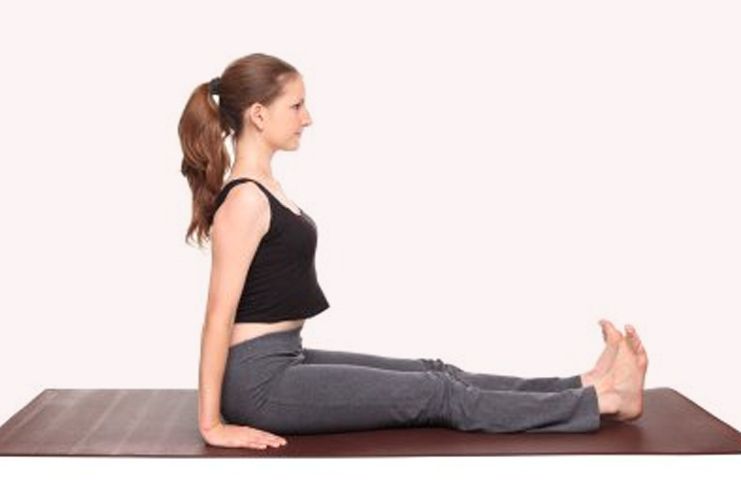
Dandasana or staff pose is one of the easiest and beginner level asana that anyone can master. It is a great yoga to reduce stress and anxiety and also contributes to a number of other health benefits as well. One line of precaution with this asana is to ensure that you don’t do it after just having a meal. It is best done with empty stomach or with a five to six hour difference between meal.
How to do?
- Sit erect and straight on a yoga mat and stretch your legs out in front of you, making sure that the feet is pointing upwards and should stay that way.
- Press down your buttocks to the ground and straighten your posture further so that the crown of your head is directly facing the ceiling of the building
- Press your heels to the ground
- Place your palms on either side of your hips to keep the posture taut and support your spine as well
- Keep the posture straight and ground the lower part of your body firmly on the ground
- Hold this for about 30 seconds, relax, and repeat the process
Other benefits
- Strengthens back muscles
- Improves posture
- Strengthens and stretches abdomen
- Cures sciatica and asthma
5. Utthita Trikonasana
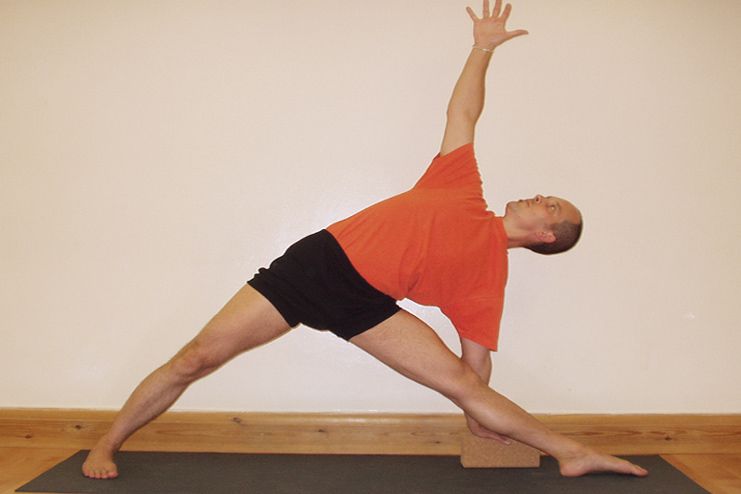
Utthita Trikonasana or Extended Triangle Pose is yet another amazing yoga for stress and anxiety relief. The asana is a bit complicated but has amazingly effective benefits, not just for the physical strength and well being but for the mental health as well.
How To Do?
- Stand erect with your arms by your side. Separate your feets to stretch them evenly but not outstretch them. Maintain a healthy balance of 3-4 ft. a distance between them.
- Put your arms on your waist, keeping a firm grip there.
- Move your right foot and bit to the right making a 90-degree angle with the previous position of the foot
- Bend your shoulders and trunk of the body on the right and let go of the right palm from the waist and put it over a brick placed right behind the right foot.
- Hold the position for 30 seconds and gradually relax and come back to the erect position
Other Benefits
- Stretches the muscles of thighs, knees, and back
- Stimulates the functioning of abdominal organs
- Improves the process of metabolism and digestion
- Relieves back pain and cures symptoms of menopause
6. Paschimottanasana
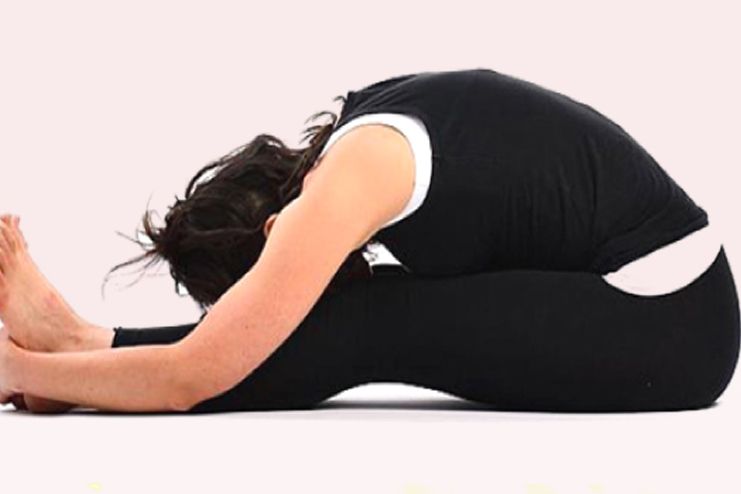
Paschimottanasana, otherwise known as the seated forward bend, is a great yoga pose to reduce anxiety. It helps stimulate the functions of a wide variety of internal organs in the body. It is also often known as the Internal Dorsal Stretch and focuses on the stretching of the dorsal part of the body.
How to do?
- Sit straight and erect with your back straight and your legs stretched in front of you. Flex your toes inward, towards you.
- Take a deep breath in and stretch your arms above your head and stretch for a few seconds
- Let the breath out and bend forward till the hip joints bend and your trunk touches your thighs
- Stretch your arms and bring them to reach the farthest they, possibly the toes but don’t overdo it
- Exhale and situate your navel over your knees and relax
- Place your head on the lower half of the legs and arrest the pose for 30 seconds
- Repeat this for a few times and relax gradually
Other Benefits
- Stretches the shoulders, legs, and spine
- Activates a number of abdominal organs
- Improves the rate of digestion
- Relieves patients with high blood pressure
- Great for postnatal stages
7. Baddha Konasana
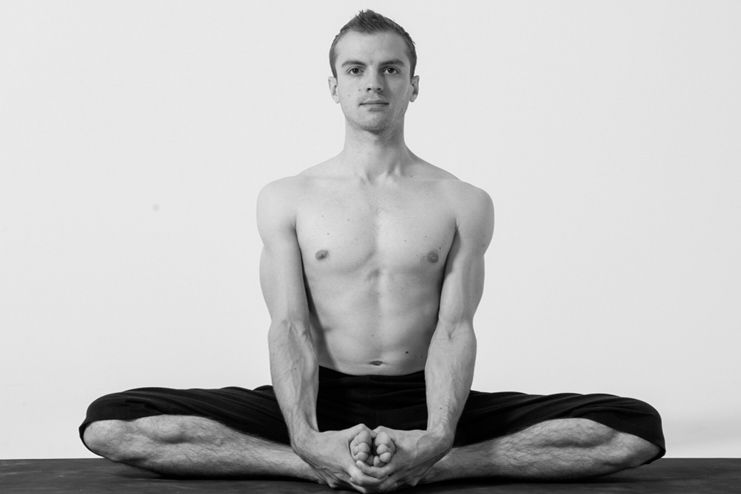
Baddha Konasana or the “bound angle pose” or the cobbler pose is the infamous butterfly asana that Baba Ramdev has so assuringly suggested every person to do. The upward and downward movement of the thighs and legs are what resembles that of a butterfly and thus the name.
How To Do?
- Sit down a yoga mat in an erect position, making sure that the spine is straight
- Bring your thighs and legs to make a shape resembling a “rhombus”, making sure that the underside of the foots are touching each other
- Inhale and exhale
- Interlink your finger and bring your palm and support the feet by placing the palms with interlinked fingers over it. Make sure that the posture is straight and erect; don’t move forward; keep the spine straight
- Move your thighs and legs up and down like the flight of a bird
- Keep doing for a minute or so, relax and repeat again
Other benefits
- Helps in smooth delivery of child
- Enhances the functioning of the reproduction system in women
- Boosts blood circulation
- Helps relieve fatigue
- Stretches the muscles of the legs and thigh
- Helps cure asthma and infertility
8. Sirshasana
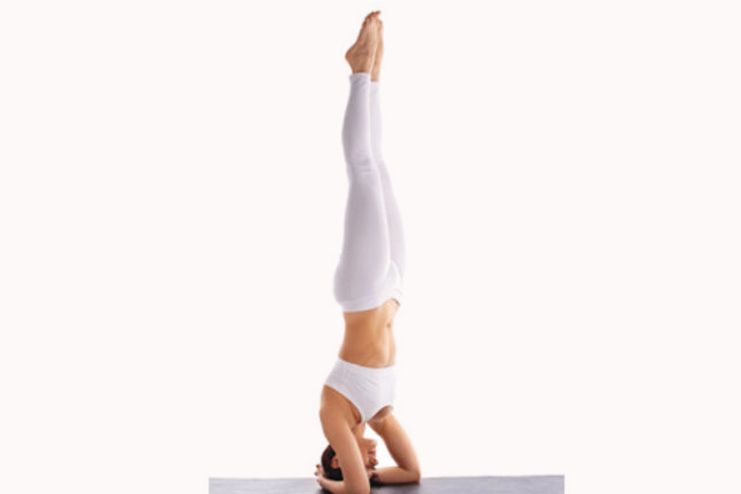
Sirshasana or the headstand pose is considered as the king of all the inverted asanas. It induces anti-gravity properties in the body and helps in increasing the blood circulation to the brain. It is a great booster and one of the best yoga poses for anxiety and stress relief but it requires time to perfect the skills that go into it.
How to do?
- Sit down on the yoga mat in a kneeling pose
- Bend your upper body forward and touch the ground with your forehead while keeping your palms in front of your head with the fingers intertwined for extra support for the later part of the pose
- Slowly move your head to rest on your intertwined palms firmly so that they don’t slip off while the asana is performed
- Gradually lift your buttocks off the ground making a right angle between the thighs and the ground
- Move the legs closer to the abdomen and gradually lift your feet off the ground, all the while supporting the head with your palms
- If you are able to keep the weight and balance, move the feet a bit higher while ensuring to keep the pressure on the hands. In this stage, the legs will still be in the front of the body.
- Gradually increase the flight of the legs and move them over and to the back of the body. At this stage, the entire body is in a vertical stance with the complete weight residing on the hands itself.
- Hold the position for as long as you can and then undo the process step by step to come to the first position of kneeling again
Other benefits
- Purifies the blood faster and improves blood circulation to the brain
- Relives headaches
- Keeps the optic system working seamlessly
- Cures the symptoms of piles
- Improves the condition of a person suffering from asthma
9. Setu Bandhasana
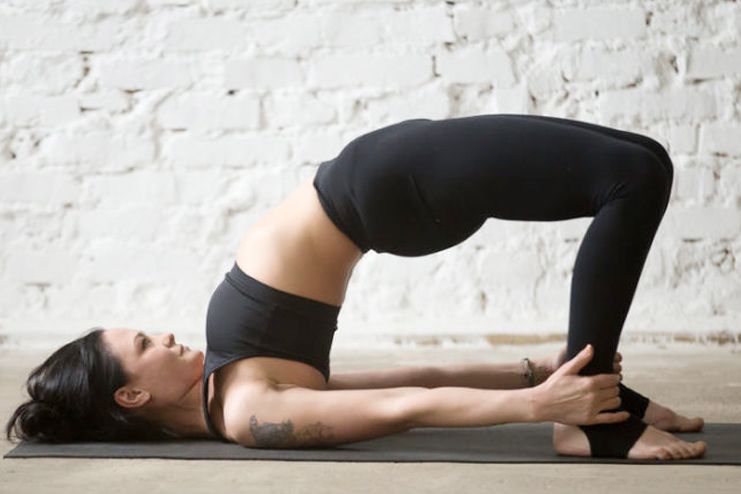
Setu Bandhasana gets its name because of the posture itself. The bridge pose is one of the most common and effective yoga poses to reduce anxiety. It helps in the salient strengthening as well as stretching of the back, legs and shoulder muscles and helps in the process of relaxation as well.
How to do?
- To start it off, lie down on your back and relax. Keep your hands by the side of your body, palms facing the floor.
- Then, bend your knees and place your feet on the ground, maintaining a distance between them. Also, make sure that your ankles and knees are in an aligned and straight position
- Take in a deep breath of air and lift your body off the ground all the while supporting the body weight on the shoulder and the arms. Make sure that your chin is touching your chest
- Keep your body firm and make sure that the thighs are placed and balanced paralleled to each other
- Put firm pressure on your palms and hand and lift your body even further up in the air
- Hold the posture for a minute and inhale slowly
- After a minute, gradually exhale and lower your body down and relax
Other benefits
- Relieves back ache and stretches the back muscles
- Helps reduce thyroid impairment
- Helps improve digestion and metabolism
- Cures symptoms of high blood pressure
- Relieves signs of menstrual pain
- Improves blood circulation
10. Shavasana
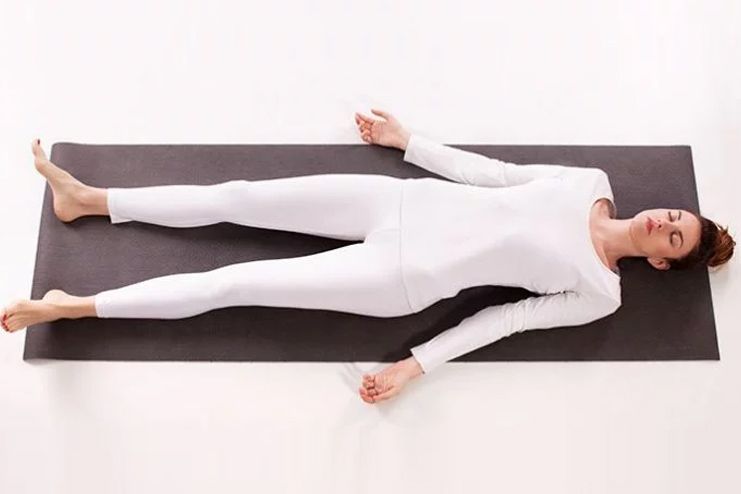
Shavasana, commonly known as the corpse pose, is the answer to every question regarding yoga for anxiety. This asana is primarily done in the beginning and end of a yoga session which helps calm thye nerves and bring about peace and tranquility to one’s racing thoughts in the mind.
How to do?
- Lie down on the yoga mat or any hard surface with the support of pillows
- Close your eyes in the process
- Let go off any thoughts and clear your mind and concentrate on one thing
- Keep the body relaxed and keep your legs comfortably apart and simply relax your body
- Keep your hands an inch or so away from the body, leaving the palms open and facing the ceiling
- Inhale and exhale gradually in the process and draw attention to every senses of your body
- After completion of 10 minutes and you feel relaxed, roll over to one side and stay for a minute, and gradually convert to Sukhasana and gain a semblance of the surroundings.
Other Benefits
- Relaxes and calms the senses
- The meditative state improves concentration
- Reduces blood pressure
- Increases memory and boosts freshness and energy in a person
Anxiety is a state of mind that can actively demoralize one’s confidence and make them wary of every possible situation and scenario in their life. Yoga is one of the best yet effective measures that helps combat and battle the symptoms and complications that often come with anxiety. Yoga for anxiety and the benefits of yoga for anxiety are profound and I hope these above mentioned yoga poses will inculcate peace, calmness, and serenity in your life.
Recommended Articles:
- Yoga for Sciatica Pain Relief
- Effective Yoga Poses For Constipation Relief
- Top 8 Yoga Poses To Burn Stubborn Belly Fat
In this Article













